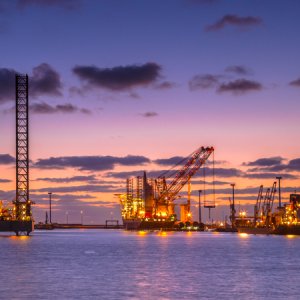Integration Equals Positive Results for the Country

STORY INLINE POST
The consolidation of CRE and the creation of ASEA improved regulations regarding social and environmental matters in the last five years but Mexico should continue looking abroad to find ways to move forward, says Alberto Sambartolome, Partner at Environmental Resources Management (ERM), a leading global provider of environmental, health, safety, risk, social consulting and sustainability-related services.
“Mexico is making great strides toward becoming an attractive country for investment and both small and major companies are showing their interest to enter,” he says. “But Mexico still has room to learn from the experience of other countries where specific regulatory issues have already been solved.”
One specific problem that Sambartolome sees in the regulation is the lack of integration between the Ministry of Energy and ASEA. He says an international best practice is to have integrated social, health and environmental impact assessments, while Mexico chose a hybrid scheme in which social studies are revised by the Ministry of Energy, and those related to health and the environment by ASEA. “Following this approach removes the value of the social and environmental impact studies and, while it may facilitate the permitting process, it overlooks the real objective of the regulation, which is to protect communities from dangerous activities and offer them appropriate compensation,” he points out.
According to Sambartolome, regulation requires a holistic approach for it to carry the weight it should. “For that to happen, it is important to have a debate among all the interested parties, including operators, government and society in general,” he says. “Including communities in the debate is vital. They should be considered in the way they are going to be compensated for the activities to be developed.” He believes the process is pertinent for companies since dealing incorrectly and superficially with communities may block the development of the project at future stages.
Conscious of this regulatory gap in Mexico, Sambartolome has noted that international players have begun to incorporate best practices and standards into their social and environmental impact assessments. ERM can contribute by sharing its effective social, environmental and safety management tools with clients, he says.
Sambartolome stresses that, although some of these best practices are not yet mandatory in Mexico, they will become a must once they are adopted by regulators due to pressure from the international players in the market. “The operations of international players will introduce new standards that regulators will start looking at and incorporating into Mexico’s own regulations,” he says. “In anticipation, we have put together a team that has experience in markets that also went through a recent opening, like Peru and Colombia.” ERM also offers its clients a holistic view of their projects. “We are not interested in selling a practice or a service in particular, but in solving the problems our clients may have,” he says. “We add value by closely studying their projects and getting to know their needs.”
ERM, however, does not want to work with clients that simply want to obtain a permit; it wants to work with those with whom ERM shares values. “With our key clients we have certain teams dedicated exclusively to that specific relationship,” Sambartolome says. “These teams are always looking for potential problems the key clients might have.” As companies start entering the country and more closely engage the communities in which they will be working, Sambartolome highlights the importance of everyone sending a unified message to avoid confusion. “The country comes from a market where there was only one operator, with one unique message,” he says. “The industry as a whole now needs to offer a unique message about the benefits that the new market is introducing to individuals and to the country.”
He stresses the importance of communities knowing exactly how and what operators are doing or developing in their territories. “For that to happen, all stakeholders must sit and discuss how to bring the best benefit for the country,” he says. “Inefficient project management is not only dangerous for the developer and operator but for the industry in general as it creates a risky and unsustainable environment for investors.”
























